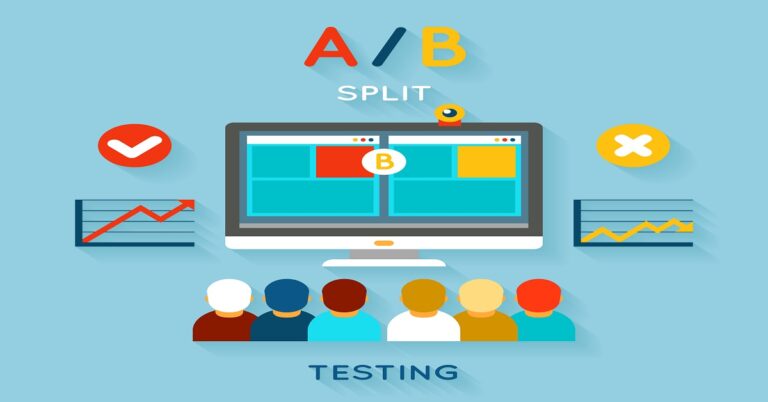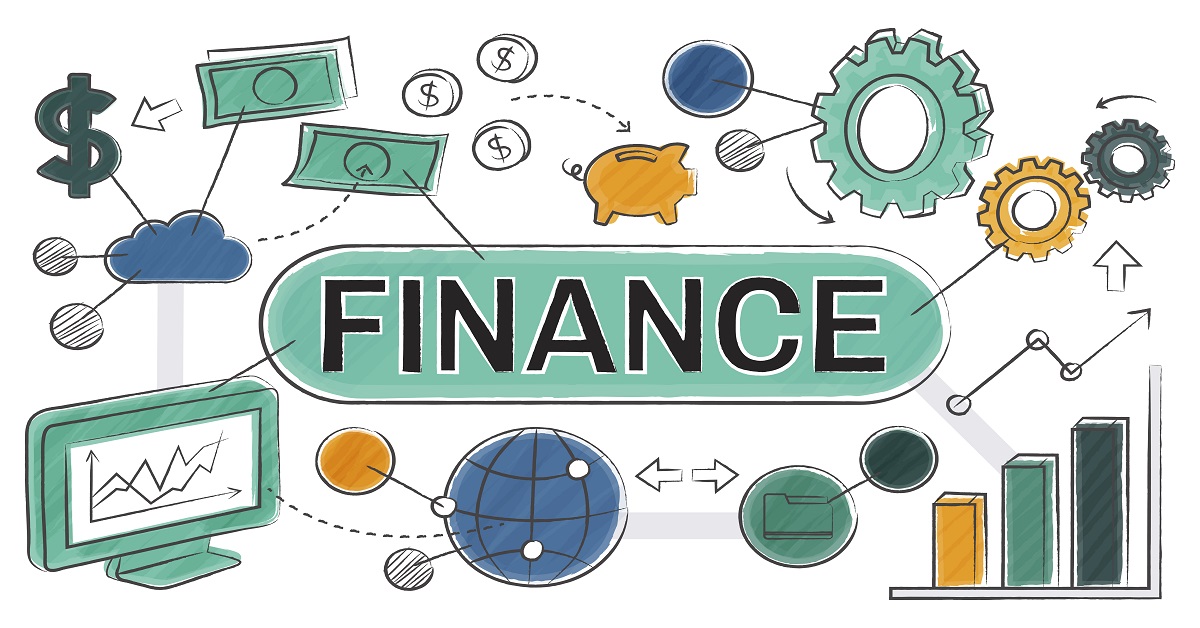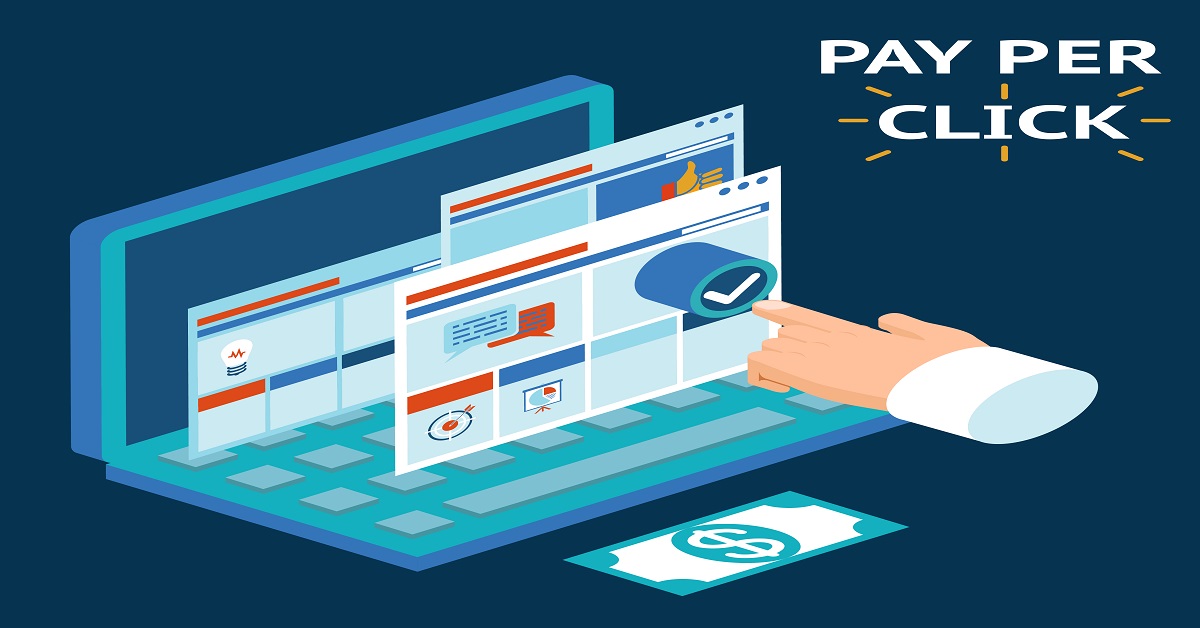Welcome to the vast and ever-evolving landscape of online advertising, where the Google Ads cost stands as a pivotal factor in determining success. In this comprehensive guide, we’ll embark on a journey to unravel the complexities surrounding Google Ads expenditure, providing you with in-depth insights, advanced strategies, and real-world examples to empower your advertising efforts.
Understanding Google Ads Cost
Setting foot into the realm of Google Ads without a profound understanding of its cost dynamics is akin to navigating uncharted waters without a compass. In this section, we delve deep into the key factors that influence costs, ensuring you navigate the advertising seas with precision and purpose.
In the intricate web of online advertising, Google Ads costs are influenced by a multitude of factors. From keyword competitiveness and ad quality to bidding strategies and market trends, each element plays a crucial role in shaping the financial aspects of your advertising campaign.
Keyword competitiveness, for instance, can significantly impact the cost per click (CPC). Highly competitive keywords often come with a higher price tag, requiring a more strategic approach to budgeting. Ad quality, measured by Google’s Quality Score, is another vital factor. A higher Quality Score not only improves ad placement but can also contribute to lower costs, creating a symbiotic relationship between quality and expenditure.
Understanding and optimising bidding strategies are key to controlling costs in the competitive landscape of online advertising. Employing effective bid strategies, such as target cost-per-acquisition (CPA) or target return on ad spend (ROAS), can help balance competitiveness and cost-effectiveness.
Importance of Budgeting
In the world of Google Ads, budgeting isn’t just about setting financial limits; it’s about orchestrating a symphony of targeted advertising. Your budget choices profoundly impact the performance, reach, and longevity of your Google Ads campaign.
Before diving into the intricacies of budgeting, it’s crucial to define your campaign objectives. Whether you aim for brand awareness, lead generation, or direct sales, aligning your budget with specific goals is the cornerstone of effective financial planning.
Google Ads offers flexibility in budgeting, allowing you to set daily or monthly limits. Understanding the relationship between your budget and campaign goals is instrumental in optimising your advertising performance. A well-allocated budget ensures that your ads remain visible to the target audience throughout the campaign period, maximising the chances of achieving your objectives.
The importance of budgeting extends beyond financial constraints; it directly influences the ad delivery system. Google’s algorithm takes into account your budget, bid strategy, and ad relevance to determine when and where your ads appear. Strategic budgeting, therefore, enhances the visibility and effectiveness of your Google Ads, contributing to a higher return on investment (ROI).
Google Ads Cost Structure

Breaking down the components of Google Ads cost is essential for advertisers aiming to demystify the billing process. Understanding where your money goes allows for informed decision-making and efficient optimisation of your advertising strategy.
The primary components of Google Ads cost include:
- Cost-Per-Click (CPC): The amount you pay when someone clicks on your ad. CPC varies based on factors like keyword competitiveness and ad relevance.
- Cost-Per-Thousand-Impressions (CPM): Commonly associated with display and video ads, CPM represents the cost for one thousand impressions (views) of your ad.
- Cost-Per-Acquisition (CPA): The cost incurred when a user takes a predefined action, such as purchasing or filling out a form.
- Bid Amount: The maximum amount you’re willing to pay for a click, view, or acquisition.
- Quality Score: A metric determined by Google that evaluates the relevance and quality of your ads, impacting your ad rank and, consequently, your costs.
Understanding the interplay between these components empowers advertisers to fine-tune their strategies, ensuring optimal results within their budget constraints.
Effective Bidding Strategies
In the competitive landscape of online advertising, your bidding strategy is the captain steering your ship through the vast sea of potential impressions. Employing effective bidding strategies is not only a cost-saving measure but also a strategic approach to outperforming competitors.
Tips for Optimising Bids:
- Set Clear Objectives: Align your bidding strategy with your campaign objectives. Whether it’s maximising clicks, impressions, or conversions, a clear goal informs your bidding decisions.
- Leverage Automated Bidding: Google Ads offers automated bidding strategies like target CPA and target ROAS. These algorithms optimise bids based on historical data, enhancing efficiency and cost-effectiveness.
- Monitor Keyword Performance: Regularly review the performance of your keywords. Identify high-performing keywords and adjust bids accordingly to capitalise on their success.
- Ad Schedule Adjustments: Consider adjusting bids based on the time of day or specific days of the week when your target audience is most active. This ensures your ads are displayed when they are most likely to generate engagement.
based on the performance of different devices. Analyse the data to understand which devices (desktop, mobile, tablet) drive the most valuable interactions and adjust bids accordingly.
- Location Bid Adjustments: Recognise the geographical nuances of your target audience. Adjust bids based on the locations that generate the most conversions or engagement.
- Ad Position Strategy: Determine your desired ad position. While the top positions may attract more clicks, they can also be more expensive. Find a balance that aligns with your goals and budget.
- Analyse your competitors: Be sure to keep a close check on your rivals. Analyse their bidding strategies and adjust your bids strategically to maintain competitiveness without overspending.
Remember, bidding strategies are not static. Continuous monitoring and adaptation based on real-time data are key to a successful campaign.
Quality Score Impact
In the realm of Google Ads, the Quality Score is akin to the North Star, guiding advertisers towards optimal performance and lower costs. Understanding the intricate relationship between Quality Score and costs is fundamental to crafting a successful advertising strategy.
Exploring the Relationship:
The Quality Score is a metric assigned by Google that evaluates the relevance and quality of your ads, keywords, and landing pages. It influences your ad rank, determining your position on the search engine results page (SERP) and, consequently, the costs you incur.
A higher Quality Score brings multiple benefits:
Lower Costs: Google rewards advertisers with higher Quality Scores by offering lower CPC. This means you pay less for each click, making your budget more efficient.
Improved Ad Position: Higher Quality Scores contribute to better ad positions on the SERP. This increased visibility can lead to more clicks and conversions.
Enhanced Ad Extensions: A good Quality Score can enable additional ad features, such as site link extensions and callout extensions, enhancing the overall appeal and effectiveness of your ads. An increase in clicks and conversions may result from this greater visibility.
Strategies for Improving Quality Score:

Relevance of Keywords: Make sure your keywords are closely related to the content of your landing page and ad copy. A cohesive theme across these elements enhances relevance.
Ad Relevance: Craft compelling ad copy that directly relates to the user’s search intent. Relevant ads improve user experience and contribute to a higher Quality Score.
Landing Page Experience: Optimise your landing pages for a seamless user experience. Fast loading times, mobile-friendliness, and relevant content contribute to a positive landing page experience.
CTR (Click-Through Rate): Encourage clicks by creating engaging ads. A higher CTR signals to Google that your ads are resonating with users, positively impacting your Quality Score.
Understanding and actively managing your Quality Score is an ongoing process. Regularly assess your ad performance, make necessary adjustments, and strive for continuous improvement.Relevance of Keywords: Make sure your keywords are closely related to the content of your landing page and ad copy.
Trends in Google Ads Cost
The landscape of online advertising is dynamic, with trends and innovations shaping the cost dynamics of Google Ads. Staying abreast of these developments is crucial for advertisers looking to maintain a competitive edge.
Recent Developments in Advertising Costs:
Machine Learning Integration: Google continues to refine its algorithms through machine learning, impacting bidding strategies and ad placements. Advertisers embracing these advancements can benefit from more efficient campaigns.
Privacy Concerns and Cookie Changes: Evolving privacy concerns and changes in cookie policies influence ad targeting. Advertisers must adapt to these changes, exploring alternative targeting methods to maintain effective campaigns.
Video Advertising Growth: The popularity of video content has led to increased investment in video advertising. Understanding the cost dynamics of video ads and incorporating them strategically can open new avenues for engagement.
Voice Search Impact: The rise of voice search introduces new challenges and opportunities for advertisers. Optimising for voice search queries and understanding the cost implications are essential to advertising strategy.
Dynamic Ads and Personalization: Advertisers are increasingly leveraging dynamic ads and personalised content. While these strategies can enhance user engagement, understanding their impact on costs is crucial for budgeting effectively.
Staying informed about these trends enables advertisers to adjust their strategies proactively, ensuring they are not only in tune with the current landscape but also prepared for the future of online advertising.
Comparing Ad Types
There are several ad formats available with Google Ads, and each has different cost factors. Understanding the variations in costs across text, display, and video ads is crucial for advertisers aiming to optimise their budget allocation.
Cost Variations Across Ad Types:
Text Ads: Traditional text ads are often the most cost-effective option. With a clear focus on keywords and concise messaging, text ads can generate clicks at a lower cost compared to other formats.
Display Ads: Display ads, incorporating visuals and graphics, can be more engaging but may come with a higher CPM. Advertisers should weigh the benefits of increased visibility against the potential higher cost per impression.
Video Ads: Video ads, while impactful, can be among the costlier formats. Investing in video content requires a strategic approach, considering factors such as production costs and the potential for higher engagement.
Shopping Ads: For e-commerce businesses, shopping ads can be a powerful tool. These ads showcase product images and details, impacting purchase decisions. Understanding the cost-effectiveness of this format is essential for retailers.
Strategies for Cost-Effective Ad Types:
Text Ad Efficiency: Capitalise on the cost-effectiveness of text ads by crafting compelling copy and selecting high-performing keywords.
Display Ad Targeting: Utilise precise targeting options for display ads to reach a relevant audience. This can enhance engagement and justify potential higher costs.
Video Ad Optimisation: Prioritise video content that aligns with your campaign objectives. Optimise for user engagement and monitor performance to justify the investment.
Shopping Ad Precision: Fine-tune product listings and targeting for shopping ads. This ensures that your ads reach users with a high likelihood of conversion, maximising cost-effectiveness.
Choosing the right ad type involves balancing cost considerations with campaign objectives. A diversified approach, incorporating various ad formats based on strategic goals, can yield optimal results.
Location and Demographics Impact
The geographical and demographic specifics of your target audience can significantly influence Google Ads costs. Advertisers must tailor their strategies to these variables for cost-effective and targeted advertising.
Regional and Demographic Influences on Costs:
Geographical Targeting: Different regions may exhibit varying levels of competition and user behaviour. Adjusting bids based on geographical performance data allows advertisers to optimise costs for specific locations.
Demographic Targeting: Understanding the demographics of your target audience is crucial. Age, gender, income level, and interests can impact ad relevance and engagement, influencing costs accordingly.
Language Considerations: Targeting users in their preferred language contributes to better user experience and engagement. Aligning your ads with the linguistic preferences of your audience can impact costs positively.
Strategies for Effective Targeting:

Analyse Performance Metrics: Regularly review performance metrics based on geography and demographics. Identify high-performing regions and demographics to allocate budgets effectively.
Segmentation and Customization: Utilise Google Ads targeting options to segment campaigns based on location and demographics. Customising ad content for specific audiences enhances relevance and cost-effectiveness.
Localised Messaging: Tailor your ad messaging to resonate with the cultural and linguistic nuances of different regions. Localised content can increase engagement and positively impact Quality Scores.
Bid Adjustments for Performance: Adjust bids based on the performance of specific demographics or regions
To ensure optimal budget allocation. If certain demographics or regions consistently drive better results, strategic bid adjustments can enhance cost-effectiveness.
A/B Testing: Implement A/B testing for ads targeted at different demographics or regions. This iterative approach allows you to refine your messaging and targeting strategies based on real-time data.

Understanding the nuances of location and demographics empowers advertisers to create targeted campaigns that resonate with specific audience segments. By tailoring strategies to regional and demographic influences, advertisers can not only optimise costs but also enhance the overall effectiveness of their Google Ads campaigns.
Seasonal Fluctuations
In the dynamic landscape of online advertising, costs can experience seasonal fluctuations. Understanding and adapting to these changes is essential for advertisers aiming to maintain a cost-effective and impactful presence throughout the year.
Understanding and Adapting to Seasonal Changes:
Identify Seasonal Trends: Analyse historical data to identify patterns and trends associated with different seasons. Recognising when demand and competition typically peak or dip allows for proactive planning.
Budget Adjustments: During peak seasons, consider allocating a larger budget to ensure increased visibility and competitiveness. Conversely, during quieter periods, a more conservative budget may be sufficient to maintain a presence.
Adapt Ad Messaging: Tailor your ad messaging to align with seasonal themes, promotions, or events. Seasonally relevant content enhances engagement and can positively impact ad performance.
Strategic Bid Management: Adjust bids based on seasonal demand and competition. During high-demand periods, strategic bidding can secure prominent ad placements without overspending.
Continuous Monitoring: Seasonal changes are dynamic, and user behaviour can evolve. Continuously monitor campaign performance and be ready to make real-time adjustments based on emerging trends.
By understanding the cyclical nature of seasonal fluctuations, advertisers can navigate the ebb and flow of demand, ensuring their Google Ads campaigns remain adaptable and cost-effective throughout the year.
Maximising ROI
Investing in Google Ads is not just about spending money; it’s about generating a substantial return on investment (ROI). Crafting strategies to maximise ROI ensures that each pound spent contributes significantly to the success of your advertising efforts.
Methods to Increase Your Return on Investment:
Clear Conversion Tracking: Implement robust conversion tracking to measure the success of your campaigns. Understanding which clicks lead to valuable actions allows for data-driven decision-making.
Optimise Landing Pages: A seamless user experience on landing pages is critical. Optimise landing pages for speed, relevance, and ease of navigation to increase the likelihood of conversions.
Refine Targeting Parameters: Regularly review and refine your targeting parameters. Ensure your ads are reaching the most relevant audience to maximise the probability of conversions.
Dynamic Ad Copy: Test and iterate on ad copy. Crafting compelling and dynamic ad content keeps your messaging fresh and engaging, contributing to higher click-through rates and conversions.
Explore Remarketing Strategies: Implement remarketing campaigns to re-engage users who have previously interacted with your website. These campaigns can be cost-effective and boost conversion rates.
Utilise Google Analytics Insights: Leverage insights from Google Analytics to understand user behaviour, identify high-performing keywords, and uncover opportunities for optimization.
By adopting a comprehensive approach that considers both cost and conversion factors, advertisers can position themselves for a more significant ROI. The synergy of strategic planning, data analysis, and continuous optimization forms the foundation for a successful and cost-efficient Google Ads campaign.
Case Studies on Google Ads Cost
Real-world examples provide invaluable insights into successful Google Ads campaigns. Let’s explore a couple of case studies that exemplify effective cost management and impactful advertising strategies.
Case Study 1: E-Commerce Success
Challenge: A leading online retailer aimed to increase sales while maintaining a profitable cost structure.
Strategy:
Targeted Shopping Ads: Leveraged Google’s Shopping Ads to showcase products directly to users searching for related items.
Dynamic Bidding: Implemented dynamic bidding strategies to adjust bids based on user intent and likelihood to convert.
Seasonal Campaigns: Tailored campaigns to align with peak shopping seasons, adjusting budgets and bids accordingly.
Results:
- 30% Increase in Conversions: By strategically managing bids and budgets, the retailer achieved a substantial increase in conversions.
- 10% Decrease in Cost-Per-Acquisition (CPA): Optimization efforts led to a notable reduction in the cost per acquisition, enhancing overall cost-effectiveness.
Case Study 2: Local Service Provider
Challenge: A local service provider aimed to increase local visibility and generate leads within a specific geographic area.
Strategy:
Geotargeted Campaigns: Focused on specific regions within the service provider’s target area to maximise local reach.
Ad Schedule Adjustments: Optimised ad scheduling to coincide with peak times for service inquiries.
Quality Score Optimization: Emphasised ad relevance and landing page experience to boost Quality Scores.
Results:
- 50% Increase in Local Impressions: Geotargeting and strategic ad scheduling significantly increased local impressions.
- 20% Decrease in CPC: By improving Quality Scores, the service provider achieved a notable decrease in cost-per-click.
These case studies underscore the importance of tailored strategies, strategic bidding, and continuous optimization in achieving successful and cost-efficient Google Ads campaigns.
Mistakes to Steer Clear Of:
- Ignoring Quality Score: Neglecting the importance of Quality Score can result in higher CPC and diminished ad performance. Prioritise ad relevance and user experience.
- Overlooking Negative Keywords: Failure to regularly update and refine negative keyword lists can lead to wasted ad spend on irrelevant clicks.
- Static Bidding Strategies: Relying on static bidding without adapting to real-time data and market trends can hinder competitiveness and cost-effectiveness.
- Neglecting Mobile Optimization: In an era of mobile dominance, neglecting mobile optimization can result in missed opportunities and higher bounce rates.
- Ignoring Ad Performance Data: Failing to regularly review and act upon performance data can lead to missed opportunities for optimization and cost savings.
- Inadequate Ad Testing: Infrequent or inadequate A/B testing of ad creatives can prevent advertisers from identifying and capitalising on high-performing content.
By steering clear of these pitfalls and adopting a proactive and data-driven approach, advertisers can maintain cost-effectiveness and drive optimal results from their Google Ads campaigns.
Future Projections
Predicting the future of Google Ads costs involves considering ongoing industry trends and emerging technologies. While the landscape is continually evolving, several projections provide insights into what advertisers can anticipate in the coming years.
Predictions on How Google Ads Costs May Evolve:
Increased Integration of AI: The integration of artificial intelligence (AI) into Google Ads algorithms is expected to continue, influencing bidding strategies, ad placements, and targeting.
Focus on Privacy-Compliant Targeting: As privacy concerns grow, advertisers may witness a shift towards more privacy-compliant targeting methods. This could impact the granularity of audience targeting options.
Emergence of New Ad Formats: Innovations in ad formats, particularly in response to evolving user preferences, may introduce new cost dynamics. Advertisers should stay adaptable to emerging formats and trends.
Augmented Reality (AR) and Virtual Reality (VR) Impact: The integration of AR and VR technologies in advertising may present new opportunities for engagement but could also introduce unique cost considerations.
Voice Search Optimization: With the increasing prevalence of voice-activated devices, optimising ads for voice search queries may become a standard practice, influencing both costs and strategies.
Staying abreast of these projections allows advertisers to position themselves strategically, preparing for the evolving landscape of Google Ads costs and ensuring they remain at the forefront of industry developments.
User Testimonials
The real litmus test of any advertising strategy lies in the experiences of those who have embarked on a Google Ads journey. Let’s hear from some satisfied users who have witnessed the impact of strategic and cost-effective advertising.
Positive Experiences and Success Stories:
Sarah Thompson, E-commerce Entrepreneur “I couldn’t believe the difference that strategic bidding and Quality Score optimization made for my online store. Not only did my ads reach a wider audience, but the decrease in CPC allowed me to reinvest in other aspects of my business. Google Ads cost management truly transformed my e-commerce game!“
Mark Johnson, Local Business Owner “As a local service provider, reaching the right audience in my area was crucial. Thanks to geotargeted campaigns and smart budgeting, I saw a significant increase in inquiries. The decrease in CPC was a bonus, proving that cost-effective Google Ads are a game-changer for local businesses.“
Emily Clarke, Marketing Manager “Our seasonal campaigns leaped forward when we started adapting bids based on demand. The flexibility in budget adjustments allowed us to capture the market during peak times without overspending. Google Ads cost management is now an integral part of our marketing strategy.“
These testimonials highlight the tangible benefits that strategic Google Ads cost management can bring to businesses of all sizes and industries.
FAQs on Google Ads Cost
Q: What factors influence the cost of Google Ads?
The cost of Google Ads is influenced by various factors, including keyword competitiveness, ad quality, bidding strategies, and market trends. Highly competitive keywords and poor ad quality can lead to higher costs.
Q: How does Quality Score impact Google Ads costs?
Quality Score plays a crucial role in determining ad rank and costs. A higher Quality Score can result in lower CPC, improved ad positions, and additional ad features, contributing to cost-effectiveness.
Q: What are effective bidding strategies for Google Ads?
Effective bidding strategies include setting clear objectives, leveraging automated bidding options, monitoring keyword performance, adjusting bids based on ad schedule and device, and analysing competitor strategies.
Q: How can advertisers adapt to seasonal fluctuations in Google Ads costs?
Advertisers can adapt to seasonal changes by identifying trends, adjusting budgets strategically, tailoring ad messaging to seasonal themes, and making real-time bid adjustments based on demand.
Q: What common pitfalls should advertisers avoid in Google Ads campaigns?
Common pitfalls to avoid include ignoring Quality Score, overlooking negative keywords, relying on static bidding strategies, neglecting mobile optimization, ignoring ad performance data, and inadequate ad testing.
Q: What is the future of Google Ads costs?
The future of Google Ads costs may involve increased integration of AI, a focus on privacy-compliant targeting, emergence of new ad formats, impact of AR and VR technologies, and optimization for voice search queries.
Conclusion
Navigating the intricacies of Google Ads cost requires a blend of strategic planning, continuous optimization, and an in-depth understanding of the evolving advertising landscape. By embracing effective bidding strategies, prioritising Quality Score, and staying adaptable to industry trends, advertisers can not only manage costs efficiently but also drive optimal results from their Google Ads campaigns.
As you embark on your Google Ads journey, remember that cost-effectiveness is not a one-time achievement but an ongoing pursuit. Regularly assess and refine your strategies, stay informed about industry developments, and leverage the diverse array of tools and features Google Ads offers to ensure your campaigns remain impactful and efficient.









